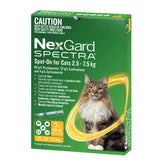Choosing the Right Cat Food: A Guide for Happy, Healthy Cats
Choosing the Right Cat Food: A Guide for Happy, Healthy Cats
As a devoted cat parent, you want nothing more than to see your furry friend purring with joy and bounding around with energy. But with so many cat food options on the market, picking the right one can feel like navigating a maze. Dry, wet, grain-free, limited ingredient, raw… the choices are endless! Don’t worry—we’ve got you covered. Here’s a friendly guide to help you make the best decisions for your cat’s nutrition, health, and happiness.
Understanding Your Cat’s Nutritional Needs
Cats are obligate carnivores, which means meat isn’t just a treat—it’s a necessity. Their bodies are designed to get protein from animal sources, and they require essential nutrients like taurine, arachidonic acid, and vitamin A that come primarily from meat.
When choosing a cat food, look for options that list a high-quality protein source, such as chicken, turkey, or fish, as the first ingredient. Avoid foods that rely heavily on fillers like corn, wheat, or soy—your cat may survive on them, but they won’t thrive.
Tip: For kittens, active adult cats, and senior cats, nutritional requirements differ. Always check the label to ensure the food matches your cat’s life stage.
Wet vs. Dry Food: What’s Best?
You’ve probably noticed that cat food comes in two main forms: wet and dry. Each has its pros and cons.
-
Wet Food: Packed with moisture, wet food helps keep your cat hydrated, which is especially important for cats prone to urinary issues. It’s also usually higher in protein and lower in carbs, which mimics a cat’s natural diet more closely.
-
Dry Food: Convenient, shelf-stable, and often more affordable, dry kibble is great for busy pet parents. Some dry foods also help reduce tartar buildup. However, it lacks moisture, so make sure your cat drinks plenty of water.
Many cat owners find a combination approach works best: wet food for hydration and taste, dry food for convenience and dental support.
Special Diets and Considerations
Some cats have unique health needs that require tailored nutrition. Here are a few common considerations:
-
Sensitive Stomachs: If your cat experiences frequent vomiting or diarrhea, limited-ingredient or easily digestible foods may help.
-
Weight Management: Indoor or less active cats may need foods lower in calories but still high in protein to maintain muscle.
-
Allergies or Intolerances: Some cats are sensitive to grains, certain proteins, or artificial additives. Grain-free or hypoallergenic formulas can be beneficial.
Always consult your veterinarian if your cat has chronic health issues, as diet can play a major role in managing conditions like kidney disease, diabetes, or food allergies.
Reading the Label: What to Look For
Choosing the right cat food isn’t just about the first ingredient—it’s about the full picture. Here’s what to keep in mind:
-
Guaranteed Analysis: Check the percentages of protein, fat, fiber, and moisture. Cats need high protein, moderate fat, and low carbs.
-
AAFCO Statement: Look for foods that meet or exceed AAFCO (Association of American Feed Control Officials) standards to ensure complete and balanced nutrition.
-
Ingredients List: The shorter, the better. Whole food ingredients like chicken, fish, or liver are ideal. Avoid mysterious by-products or artificial fillers.
Pro tip: Rotate flavors occasionally to keep your cat interested in their meals, but introduce new foods gradually to avoid tummy troubles.
Tips for Transitioning Your Cat to a New Food
Cats are creatures of habit, and switching foods suddenly can cause digestive upset. Here’s a simple strategy for a smooth transition:
-
Start Slowly: Mix 25% new food with 75% old food for the first 2–3 days.
-
Increase Gradually: Move to a 50/50 mix for a few days, then 75/25.
-
Full Switch: After about a week, your cat should be fully adjusted to the new food.
Patience is key! Some cats take longer to adapt, especially if they are picky eaters.
Choosing the right cat food doesn’t have to be stressful. By focusing on high-quality ingredients, considering your cat’s specific needs, and reading labels carefully, you can ensure your furry friend stays healthy, happy, and full of life.
Check out more tips and premium treats at pikapet.com.au



